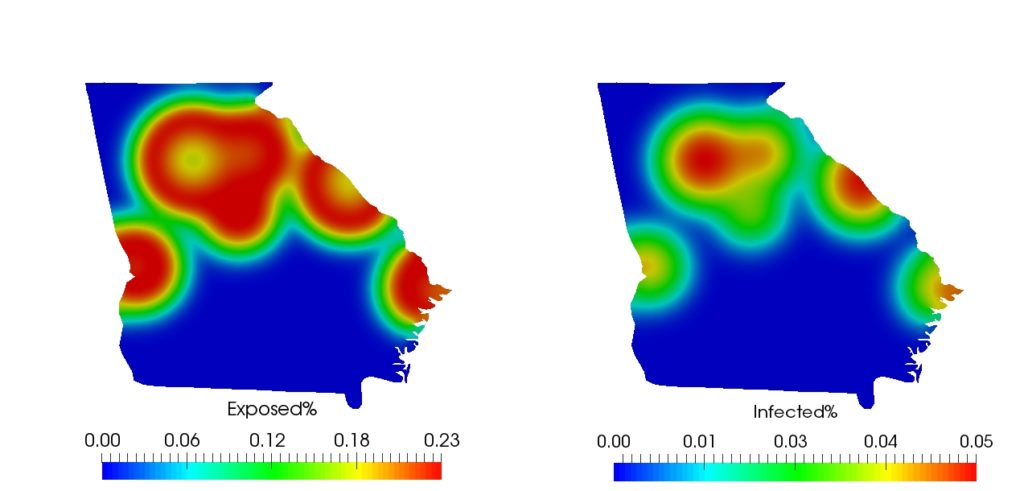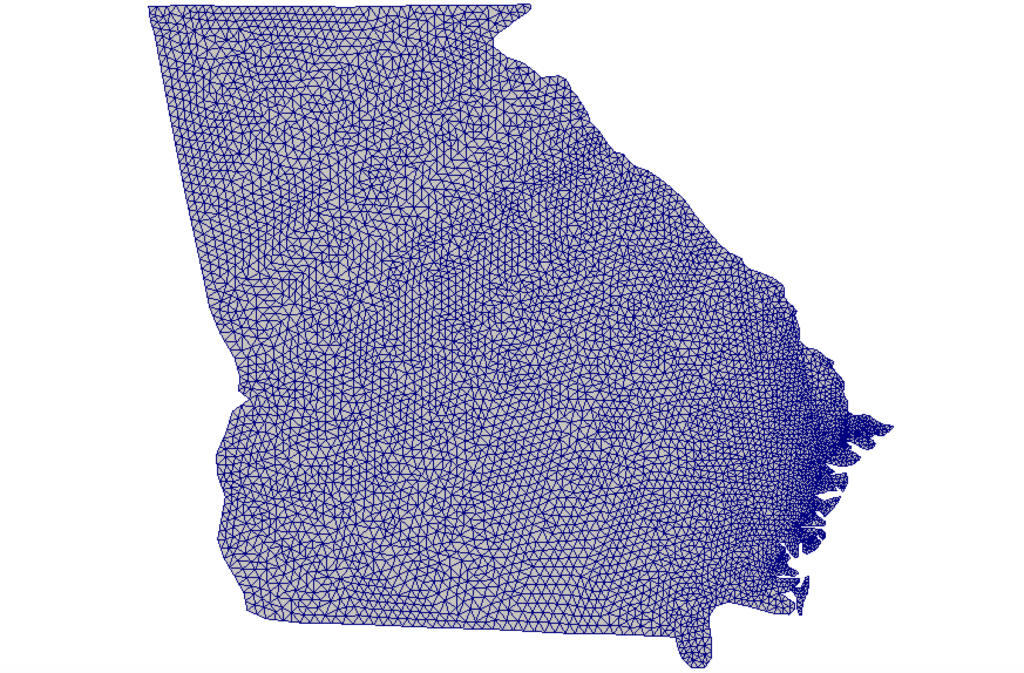The recent worldwide outbreak of COVID-19 has led to a surge of interest in the modeling and simulation of infectious disease outbreaks. Our post-doc Alexander Viguerie is leading a team of researchers affiliated with the University of Pavia Computational Mechanics Group and longtime collaborators at Emory University (USA), University of Texas at Austin (USA), and RWTH Aachen (Germany). They are approaching the problem with a susceptible-exposed-infected-recovered-deceased (SEIRD) model coupled with a heterogeneous diffusion model to incorporate the spatial propagation.
The group intends to run simulations of COVID-19 spread in the U.S. state of Georgia, chosen for its large number of counties and corresponding rich spatial resolution, using the available county-level data to evaluate a partial-differential model of spatiotemporal contagion.
The project has recently been approved for a computing grant at the Jülich Supercomputing Centre to perform the simulations.

Fig. 1: Simulated outbreak using artificial data.

Fig. 2: Example discretization of the state of Georgia.

